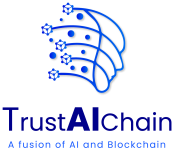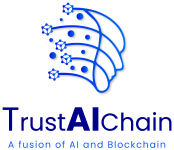Understanding KYC and AML
Know Your Customer (KYC) involves verifying the identity of clients to prevent illegal activities. This process includes:
Customer Identification: Collecting and verifying personal information.
Customer Due Diligence: Assessing the risk level associated with the customer.
Enhanced Due Diligence: For high-risk customers, conducting deeper investigations.
Anti-Money Laundering (AML) involves monitoring and reporting suspicious activities to prevent money laundering. Key components include:
Transaction Monitoring: Analyzing transactions for suspicious patterns.
Sanctions Screening:Checking customers against global watchlists.
Suspicious Activity Reporting: Reporting unusual activities to regulatory authorities.

Traditional KYC and AML processes face several challenges:
High Operational Costs: Manual verification processes require significant manpower and resources.
Time-Consuming: Verifying and monitoring customers can take days or even weeks.
Human Error: Manual processes are susceptible to errors and inconsistencies.
Fragmented Data:Customer data is often scattered across multiple systems, making it difficult to access and verify.
Combining AI and blockchain technology can address these challenges by providing a secure, efficient, and scalable KYC and AML compliance solution. Having Blockchain technology benefits include:
Immutable Ledger: Blockchain’s decentralized ledger ensures that once data is recorded, it cannot be altered, providing a tamper-proof record of transactions.
Transparency: All participants in the blockchain network have access to the same data, ensuring transparency and reducing the risk of fraud.
Efficiency: Blockchain can automate data sharing between financial institutions, reducing duplication and speeding up the verification process.
With AI enhancing blockchain capabilities by in the following ways:
Automated Verification: AI algorithms can automatically verify customer identities using biometric data, such as facial recognition and fingerprint scanning.
Risk Assessment: AI can analyze large volumes of data to assess the risk level associated with each customer, identifying high-risk individuals more accurately.
Transaction Monitoring: AI-powered systems can monitor transactions in real-time, detecting suspicious activities and flagging them for further investigation.
Streamlining KYC with AI and Blockchain
A blockchain-based KYC system can store verified customer information on a decentralized ledger. Here’s how it works:
Data Collection: Customers provide their personal information and biometric data.
Data Verification:AI algorithms verify the data against government databases and other trusted sources.
Blockchain Recording: Verified data is encrypted and recorded on the blockchain.
Data Sharing:Financial institutions access the blockchain to retrieve verified customer information, eliminating the need for repeated verifications.
Python
# Sample code to demonstrate blockchain data recording
import hashlib
import json
from time import time
class Blockchain:
def __init__(self):
self.chain = []
self.current_transactions = []
self.new_block(previous_hash=’1′, proof=100)
def new_block(self, proof, previous_hash=None):
block = {
‘index’: len(self.chain) + 1,
‘timestamp’: time(),
‘transactions’: self.current_transactions,
‘proof’: proof,
‘previous_hash’: previous_hash or self.hash(self.chain[-1]),
}
self.current_transactions = []
self.chain.append(block)
return block
def new_transaction(self, customer_id, customer_data):
self.current_transactions.append({
‘customer_id’: customer_id,
‘customer_data’: customer_data,
})
return self.last_block[‘index’] + 1
@staticmethod
def hash(block):
block_string = json.dumps(block, sort_keys=True).encode()
return hashlib.sha256(block_string).hexdigest()
@property
def last_block(self):
return self.chain[-1]
# Create a new Blockchain
blockchain = Blockchain()
ple of adding a new KYC transaction
customer_id = “12345”
customer_data = {
“name”: “Jane Doe”,
“dob”: “1990-01-01”,
“passport”: “X1234567”,
}
blockchain.new_transaction(customer_id, customer_data)
# Create a new block to record the transaction
blockchain.new_block(proof=200)
print(blockchain.chain)
Enhancing AML with AI and Blockchain
An AI-powered blockchain AML system can monitor transactions and flag suspicious activities:
Real-Time Monitoring:AI algorithms analyze transactions in real-time, comparing them against known money laundering patterns.
Anomaly Detection: AI detects unusual transaction patterns and flags them for further investigation.
Immutable Records:All transactions are recorded on the blockchain, providing a transparent and tamper-proof record for regulatory audits.
Python
# Sample code to demonstrate AI transaction monitoring
import random
class AMLMonitoring:
def __init__(self, blockchain):
self.blockchain = blockchain
def monitor_transactions(self):
for block in self.blockchain.chain:
for transaction in block[‘transactions’]:
if self.is_suspicious(transaction[‘customer_data’]):
self.report_suspicious(transaction)
def is_suspicious(self, customer_data):
# Simple rule-based check for suspicious activity (for demonstration)
# In practice, this would be a complex AI model
if customer_data[‘transaction_amount’] > 10000: # Example threshold
return True
return False
def report_suspicious(self, transaction):
print(f”Suspicious transaction detected: {transaction}”)
# Example of monitoring transactions on the blockchain
aml_monitor = AMLMonitoring(blockchain)
# Simulate some transactions
for i in range(10):
customer_data[‘transaction_amount’] = random.randint(500, 20000)
blockchain.new_transaction(customer_id, customer_data)
blockchain.new_block(proof=200)
# Monitor the transactions for suspicious activities
aml_monitor.monitor_transactions()
Benefits of AI-Driven Blockchain Solutions
Reduced Operational Costs:Automation and efficient data sharing lessen the need for manual verification and monitoring, lowering operational costs.
Improved Accuracy:AI algorithms provide more accurate risk assessments and transaction monitoring, reducing false positives and negatives.
Enhanced Security: Blockchain’s immutable ledger ensures that customer data and transaction records are secure and tamper-proof.
Faster Processing: Automated verification and real-time monitoring speed up the KYC and AML processes, improving customer onboarding and compliance efficiency.
Regulatory Compliance:Transparent and accurate records on the blockchain make it easier for financial institutions to demonstrate compliance with regulatory requirements.
Real-World Implementations and Case Studies

Case Study: HSBC’s Blockchain-Based KYC Platform
HSBC has been at the forefront of leveraging blockchain technology for KYC. The bank developed a blockchain-based platform called “Know Your Customer” utility to streamline the process of verifying customer identities. This platform allows HSBC to share verified customer data with other banks securely and efficiently. Using blockchain, HSBC reduces duplication of efforts and ensures that customer data is up-to-date and accurate across the banking ecosystem. This initiative has led to a significant reduction in the time and cost associated with KYC processes.
Case Study: AI-Powered AML Solutions at JPMorgan Chase
JPMorgan Chase has implemented AI-driven solutions to enhance its AML compliance. The bank utilizes machine learning algorithms to analyze transaction data and identify patterns indicative of money laundering activities. These AI systems continuously learn and adapt to new threats, providing JPMorgan with a robust mechanism to detect and prevent financial crimes. AI has enabled the bank to reduce false positives and streamline the investigation process, improving efficiency and effectiveness in combating money laundering.
Challenges and Considerations
Data Privacy and Security
One of the primary concerns with integrating AI and blockchain for KYC and AML is ensuring data privacy and security. Financial institutions must comply with data protection regulations such as the General Data Protection Regulation (GDPR) and the California Consumer Privacy Act (CCPA). Blockchain’s immutable nature ensures data integrity, but it also raises challenges in data deletion and modification. Implementing privacy-preserving techniques, such as zero-knowledge proofs and homomorphic encryption, can help address these challenges.
Interoperability
For blockchain-based KYC solutions to be effective, interoperability between different blockchain networks and financial institutions is crucial. Developing standards and protocols for data sharing and communication between diverse systems is necessary to ensure seamless integration and cooperation across the financial sector.
Regulatory Compliance
While AI and blockchain can enhance compliance processes, they must comply with existing regulatory frameworks. Financial institutions must work closely with regulators to ensure their AI-driven blockchain solutions meet all legal and compliance requirements. This includes regular audits, transparency in AI decision-making, and ensuring that blockchain records are accessible for regulatory review.

Call to Action
For financial institutions looking to explore AI-driven blockchain solutions for KYC and AML, now is the time to act. Begin by thoroughly assessing your current compliance processes and identifing areas where AI and blockchain can add value. Collaborate with technology partners and regulatory bodies to develop and implement solutions that meet your needs. By taking proactive steps today, you can position your institution for success in the rapidly evolving landscape of financial compliance.
By diving deep into the integration of AI and blockchain for KYC and AML compliance, this blog post aims to provide comprehensive insights and practical guidance for financial institutions looking to enhance their compliance capabilities. Through real-world examples, challenges, and future trends, readers can understand the transformative potential of these technologies in the banking sector.
In Summary
Integrating AI and blockchain technology offers a powerful solution for streamlining the banking sector’s KYC and AML compliance processes. By leveraging both technologies’ strengths, financial institutions can achieve higher efficiency, accuracy, and security while reducing operational costs. Real-world implementations and case studies demonstrate the tangible benefits of AI-driven blockchain solutions, while future trends and innovations promise even greater advancements.
As the regulatory landscape evolves, adopting AI-driven blockchain solutions will be crucial for banks to stay compliant and competitive in the digital age. By exploring the potential of AI and blockchain for KYC and AML, financial institutions can transform their compliance processes, ensuring they are well-equipped to meet the challenges of modern banking.








4 Responses
Bottlenecks often encountered in the smooth delivery of KYC/AML documentations is of an iunimaginable degree. However the advantages of AI in this scheme will be totally revolutionizing and will mark a stark breakthrough in that sphere.
Hi Temmy,
Indeed, the bottlenecks in the smooth delivery of KYC/AML documentation are significant, often due to manual processes, data silos, and verification delays. However, the integration of AI in this realm can revolutionize the process by automating document verification, enhancing data accuracy, detecting fraud in real-time, and streamlining compliance workflows, ultimately leading to more efficient and secure KYC/AML procedures.
Great job site admin! You have made it look so easy talking about that topic, providing your readers some vital information. I would love to see more helpful articles like this, so please keep posting! I also have great posts about Mobile Operating Systems, check out my weblog at Webemail24
Hi Felix,
Thank you for your nice compliments.
A great write up by you on the online marketing!